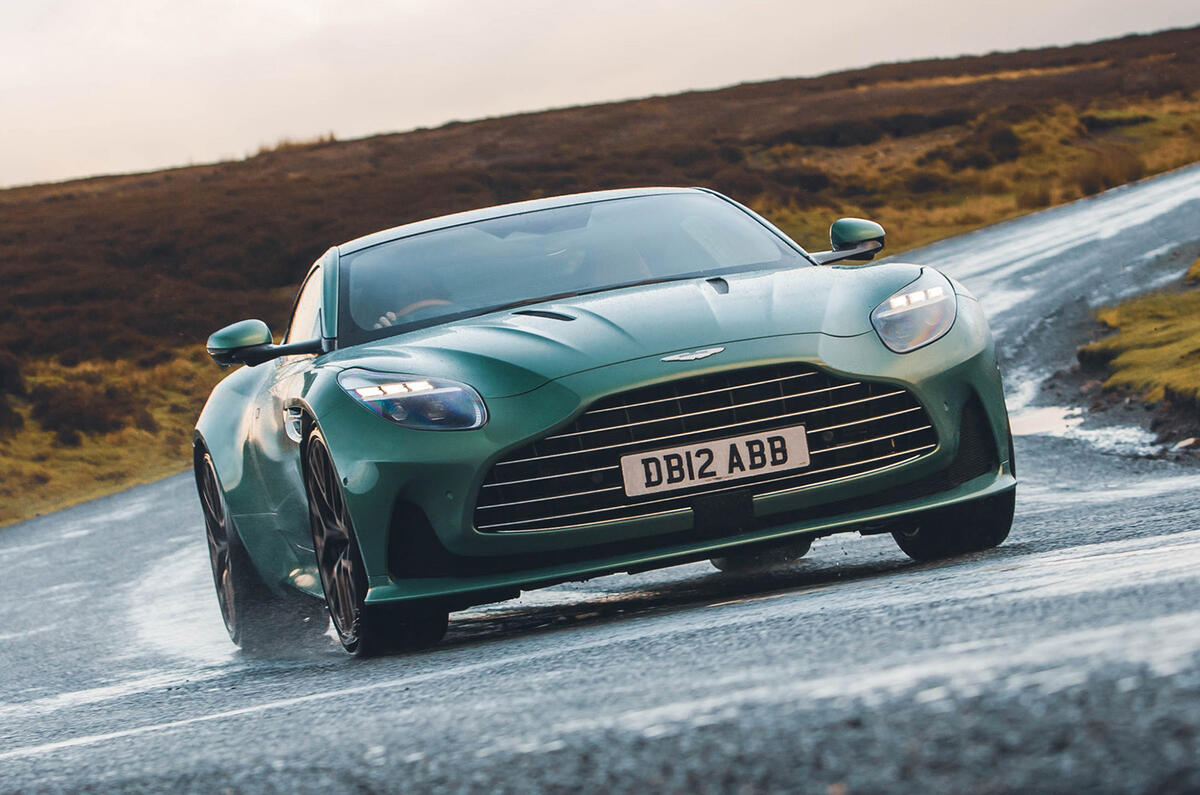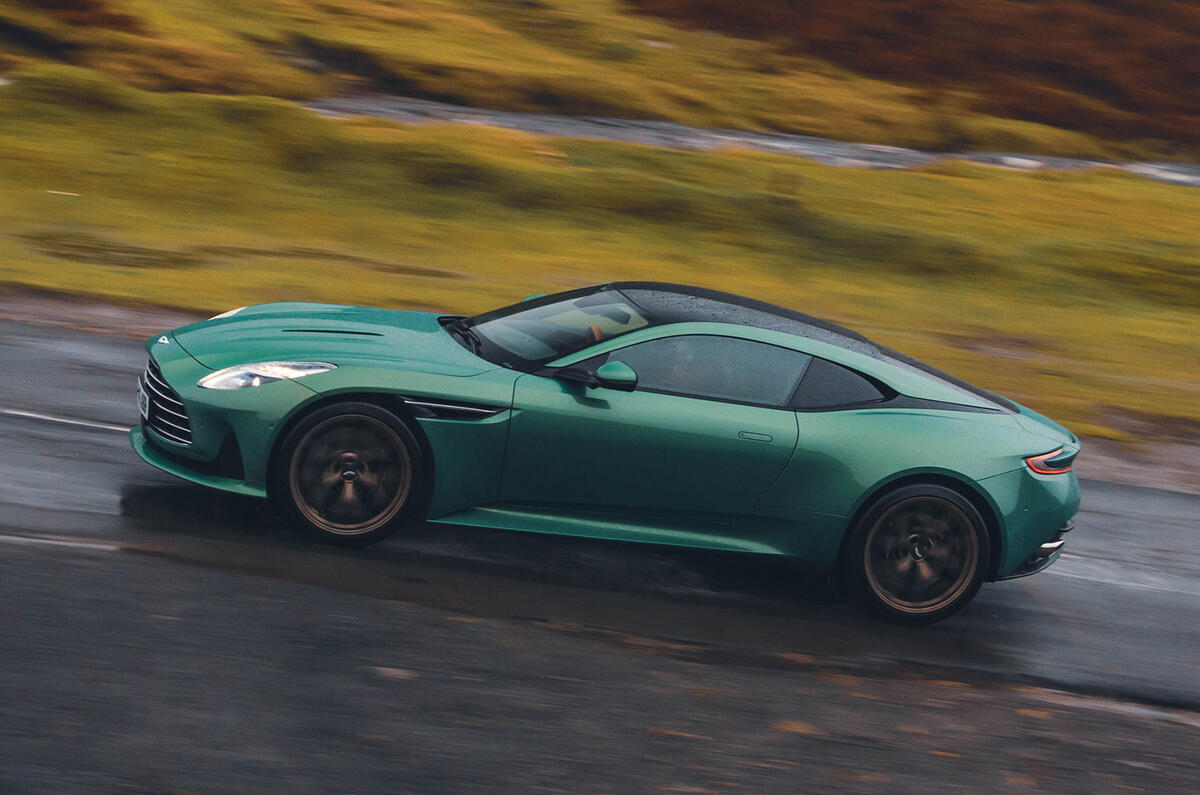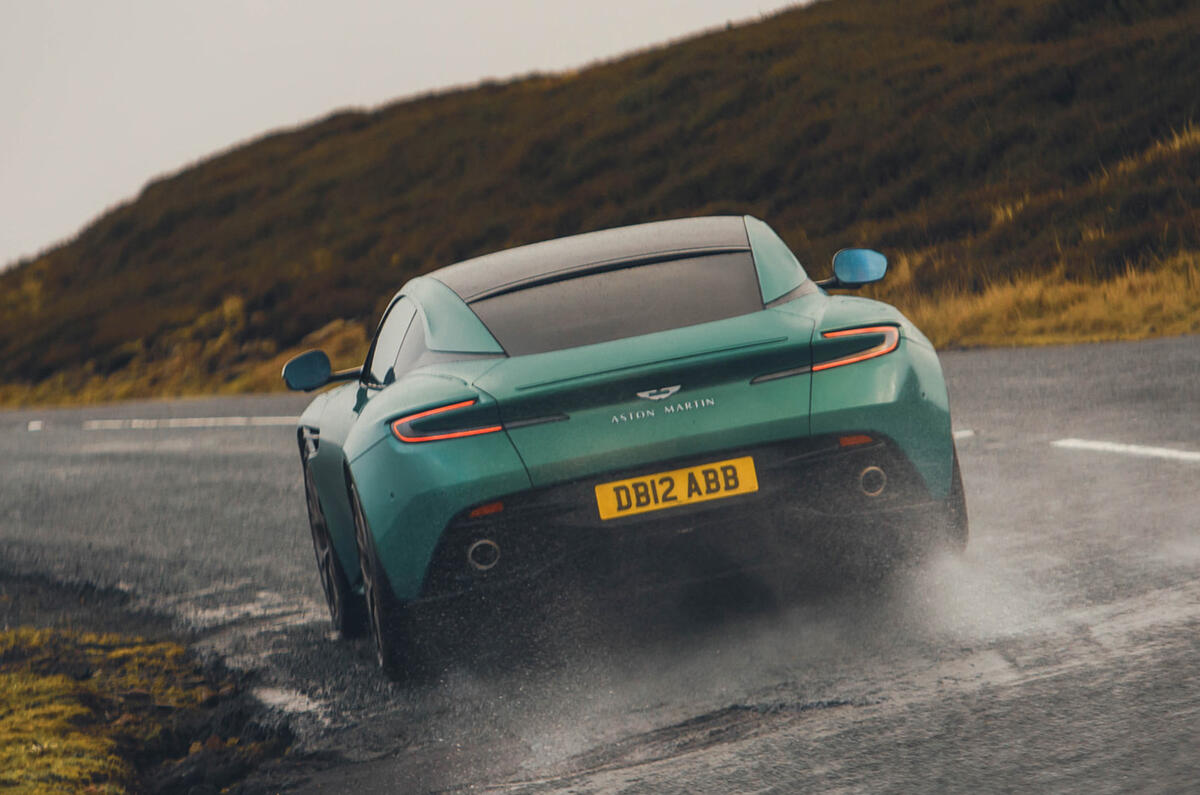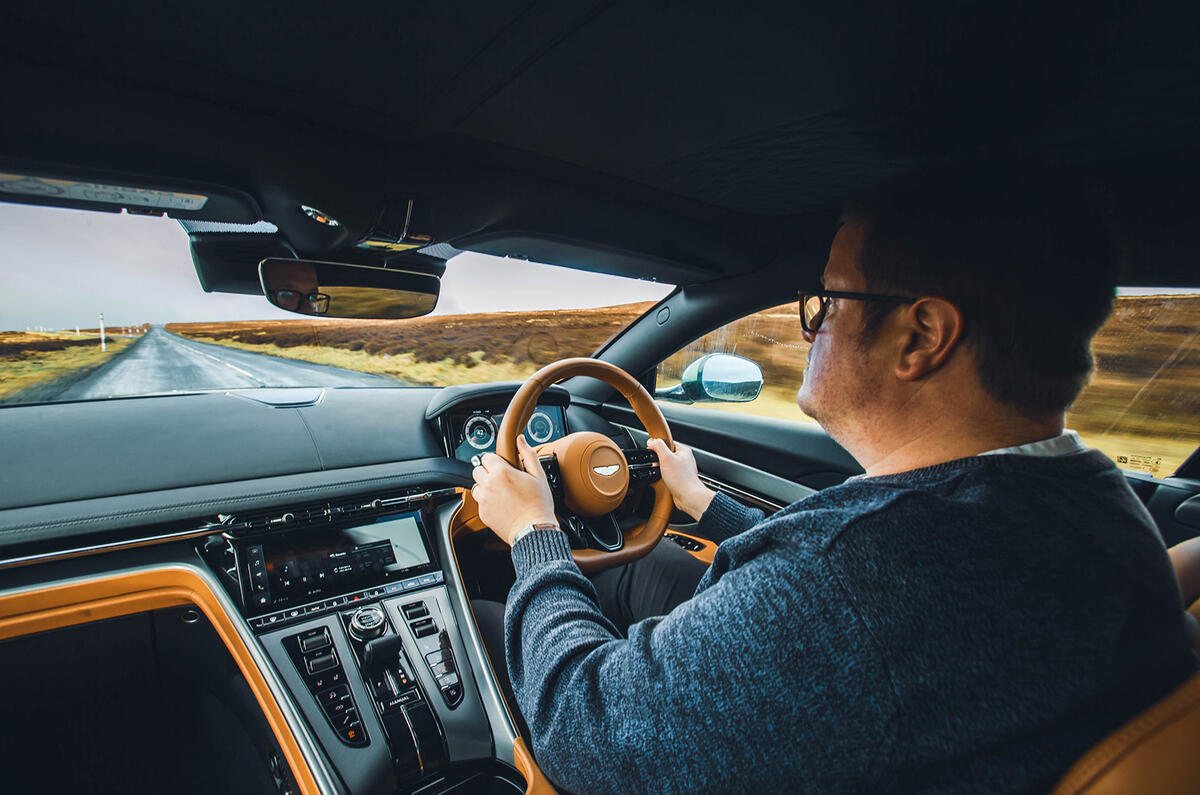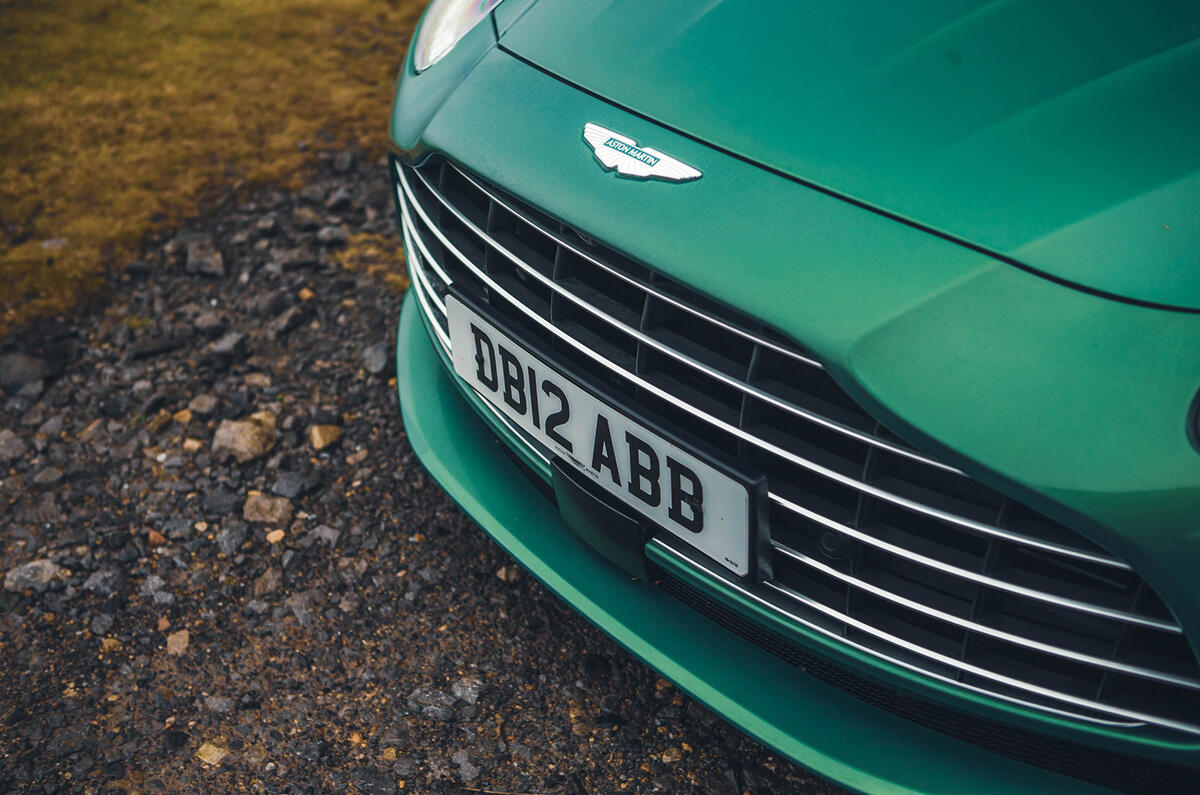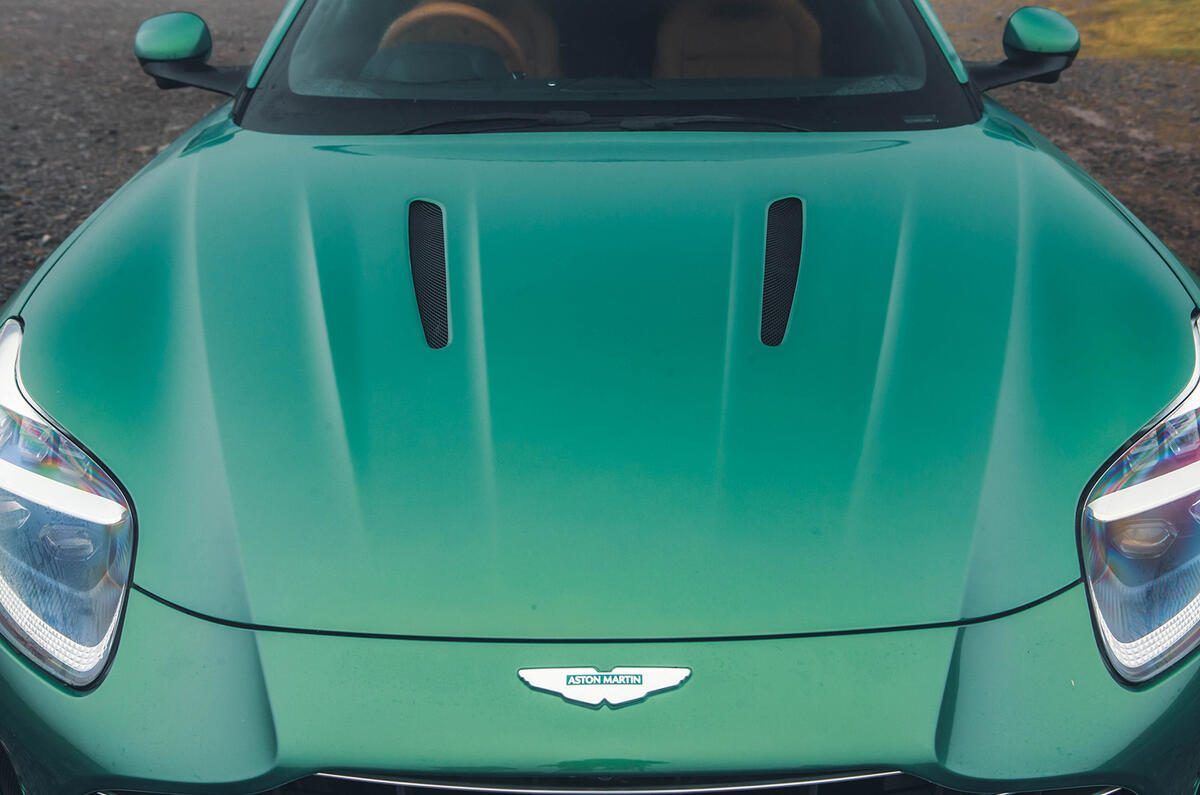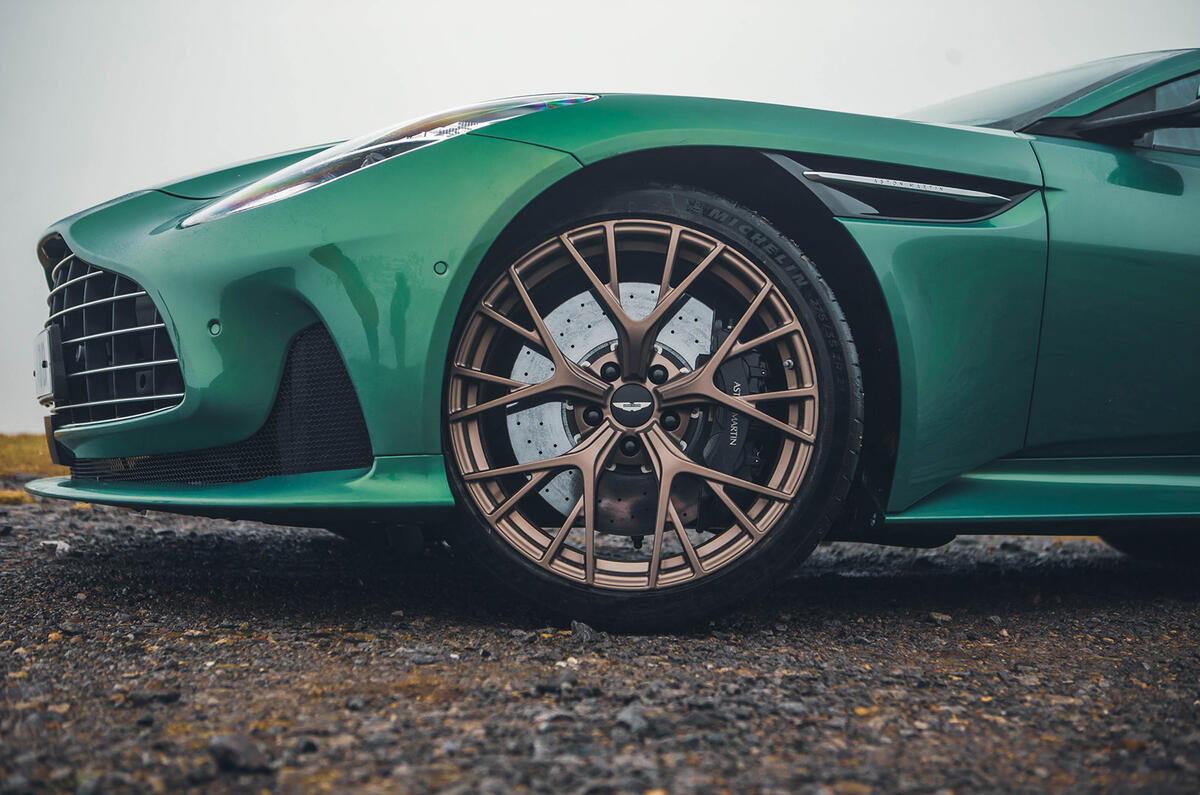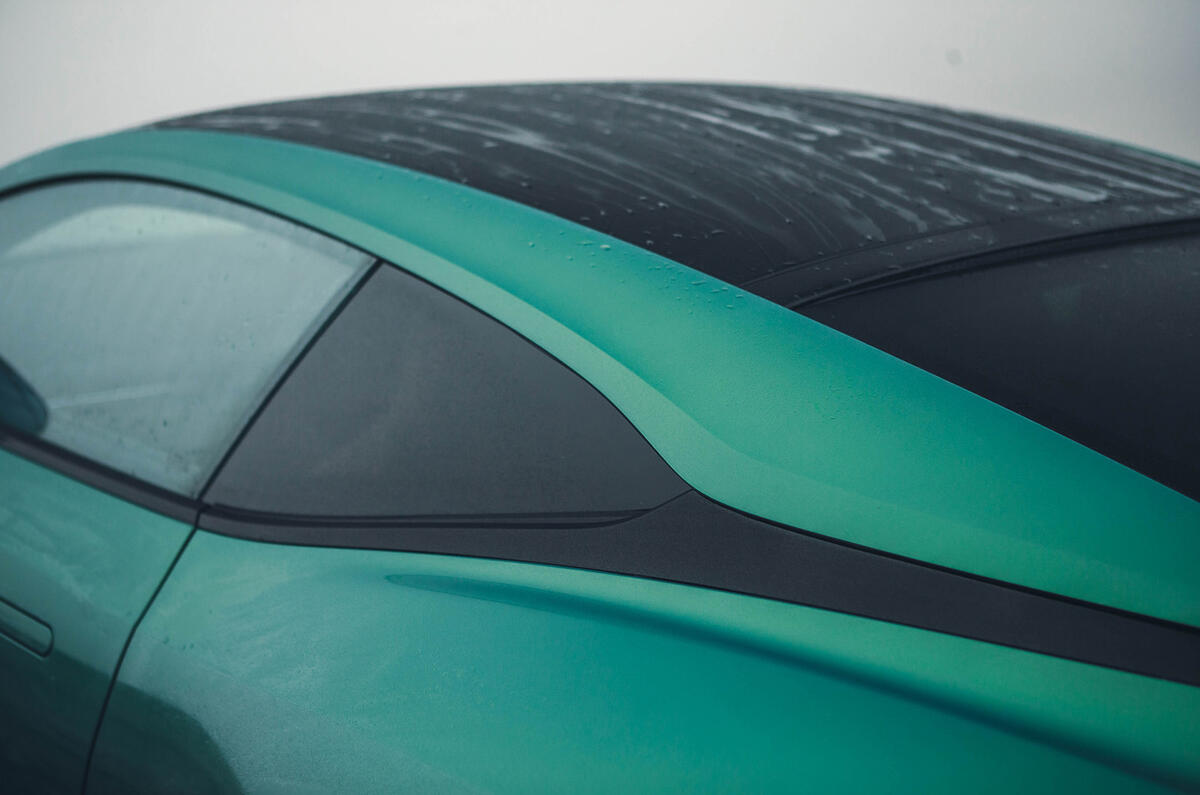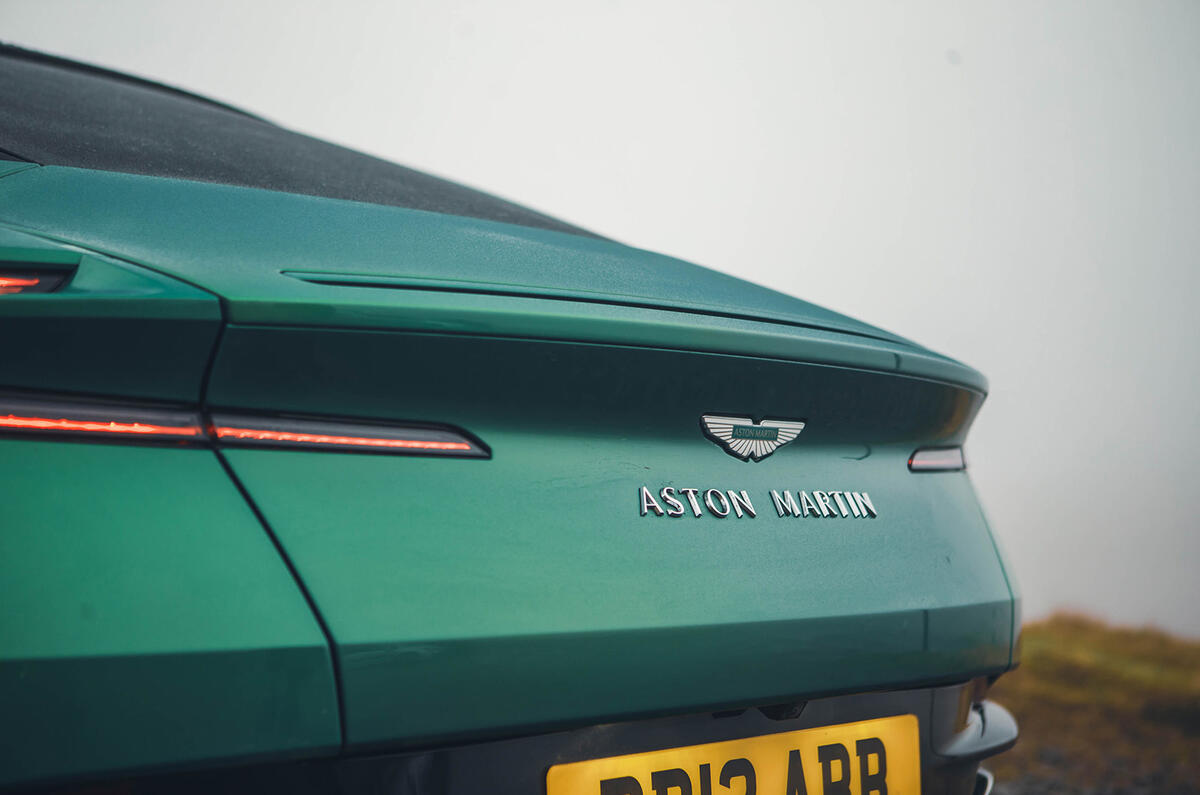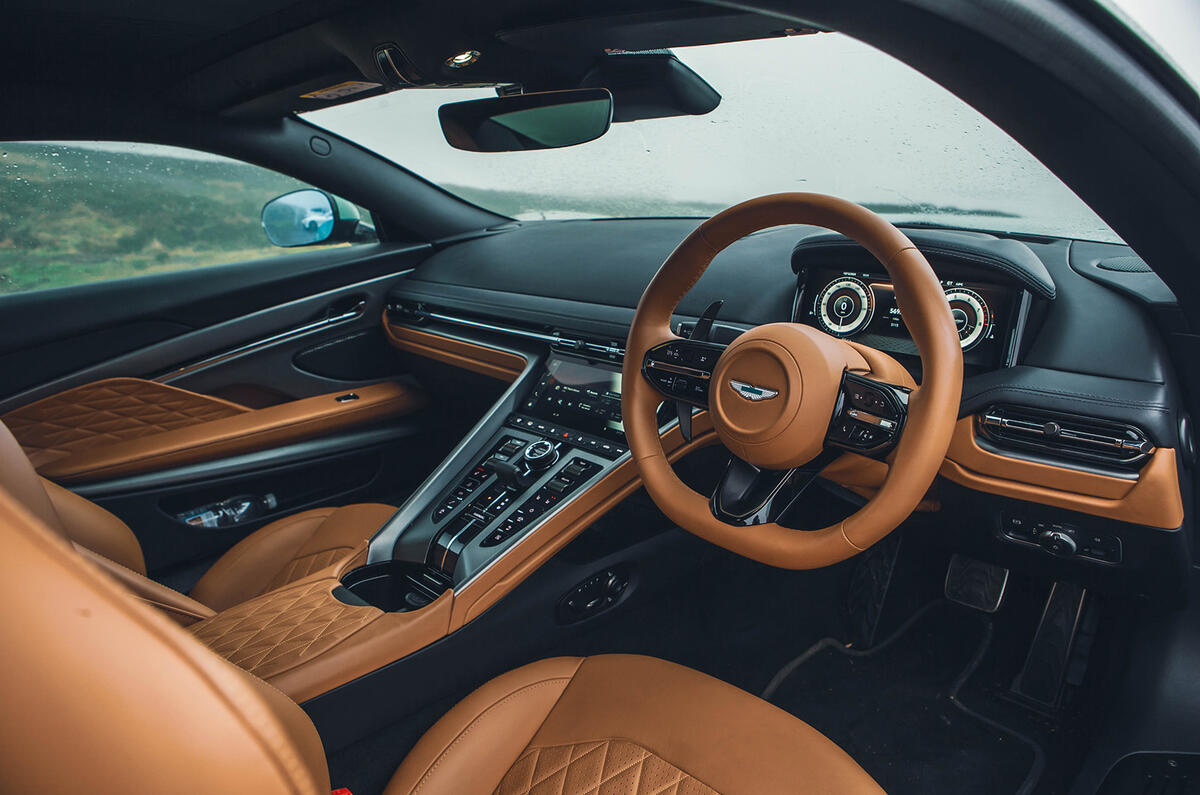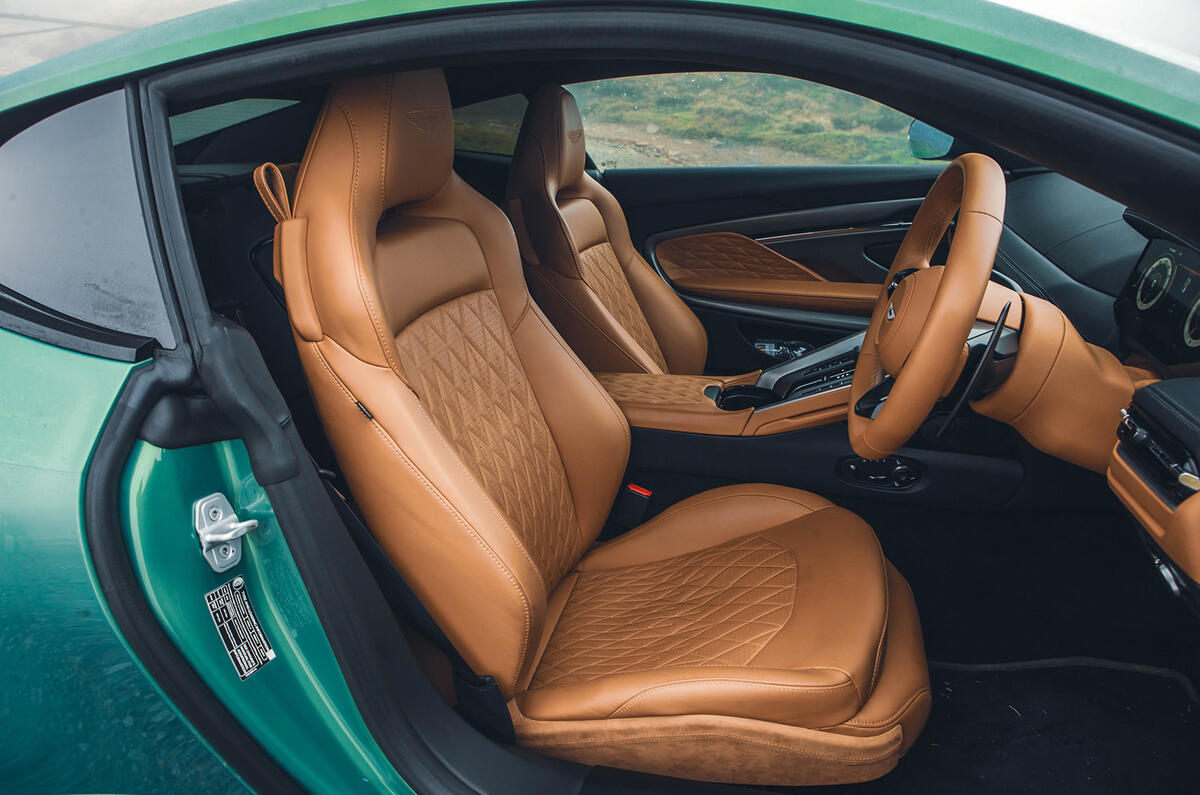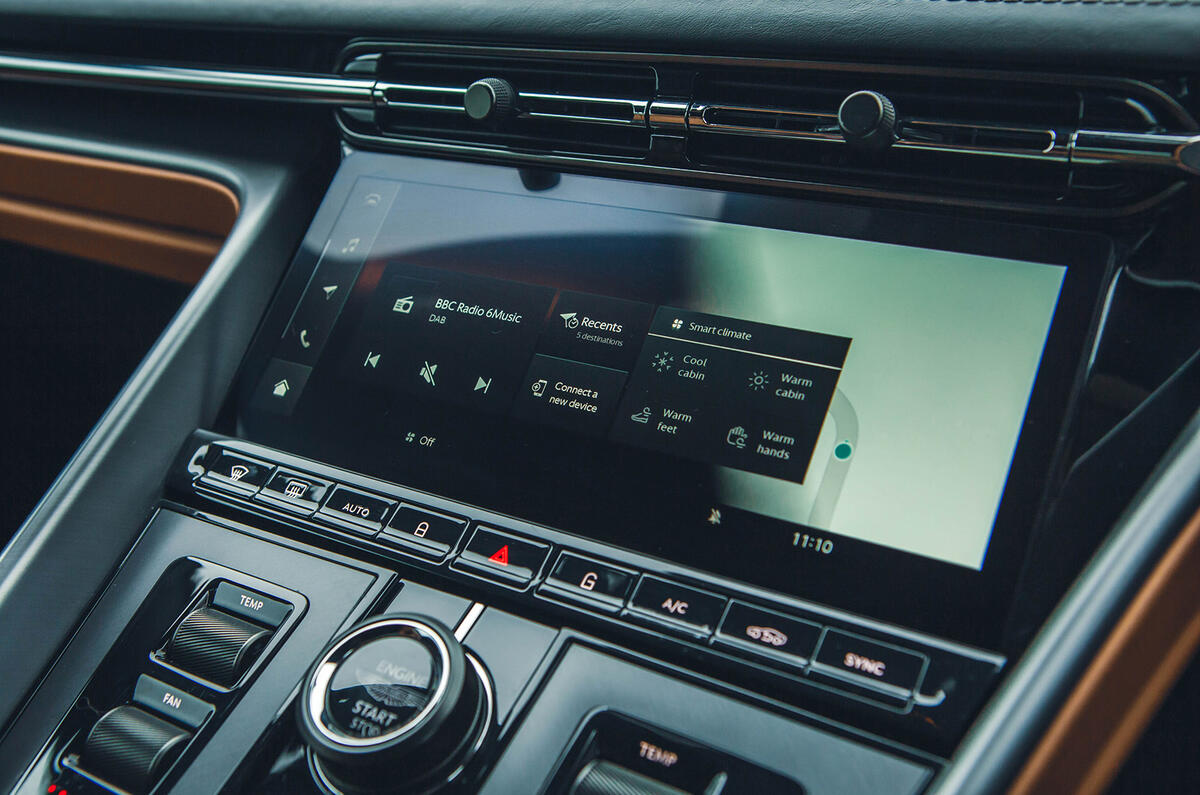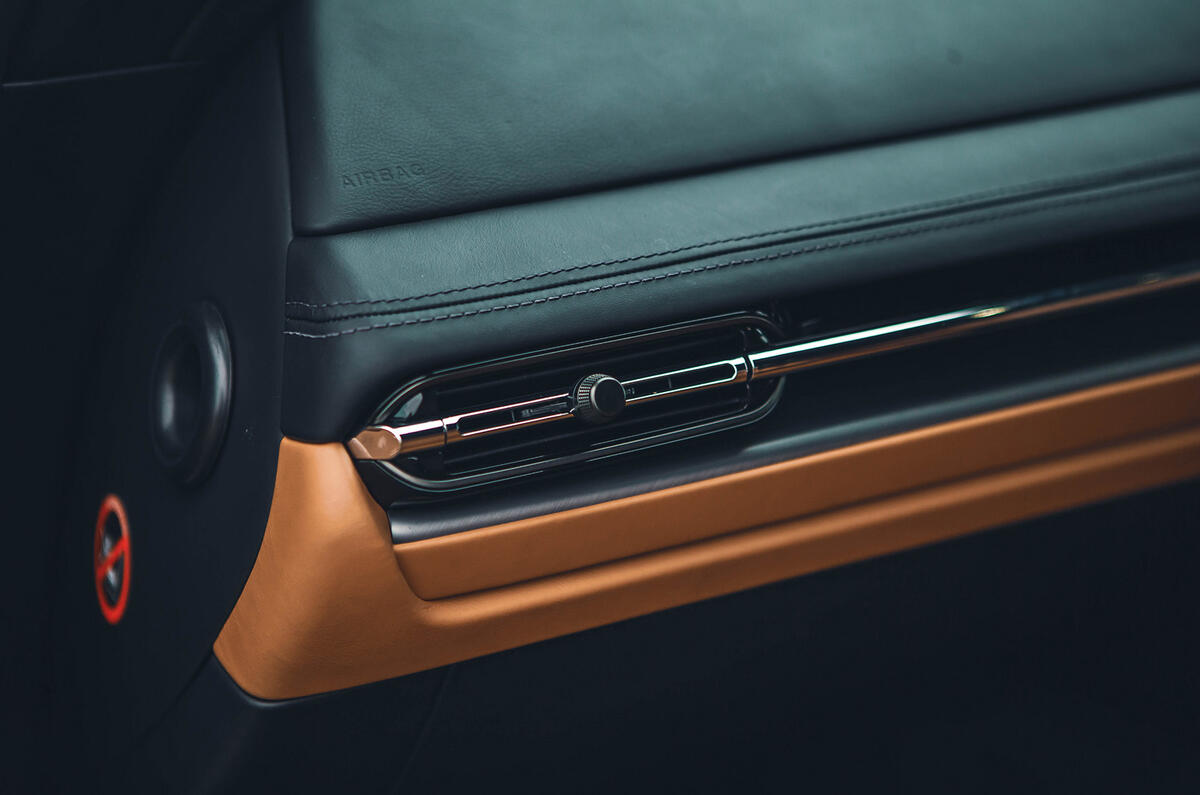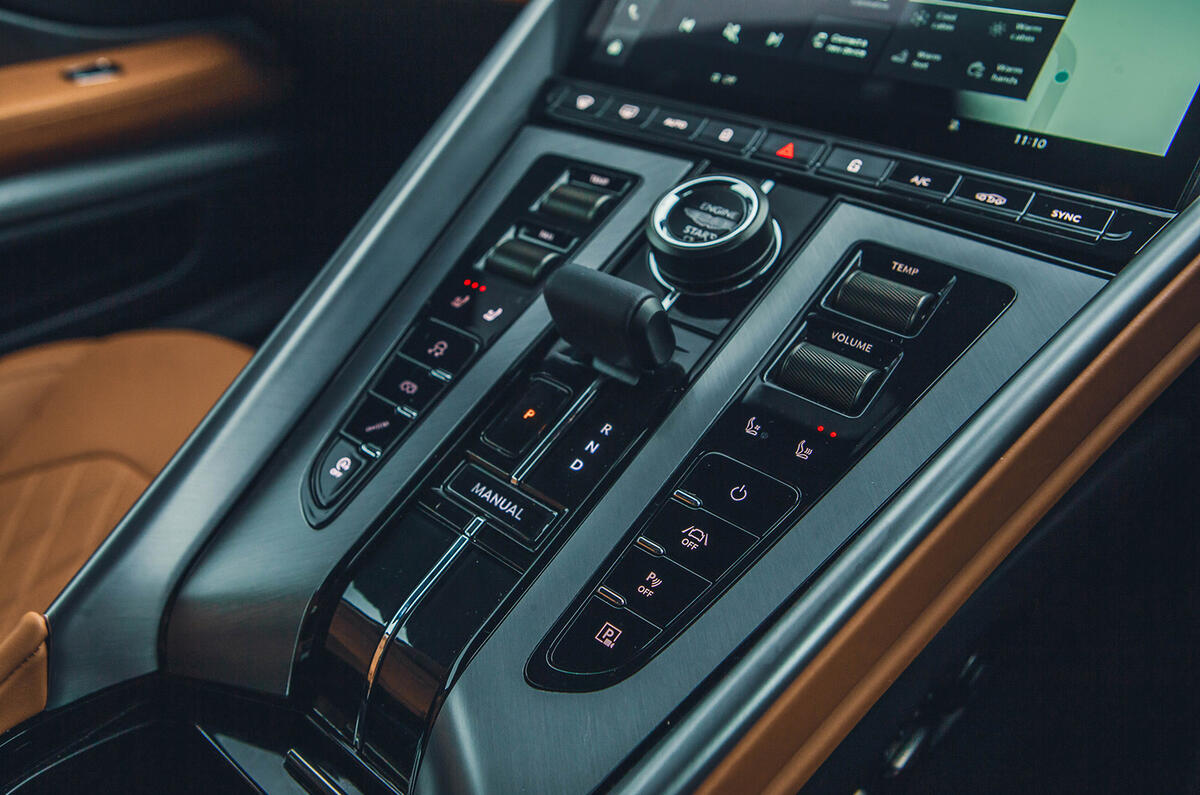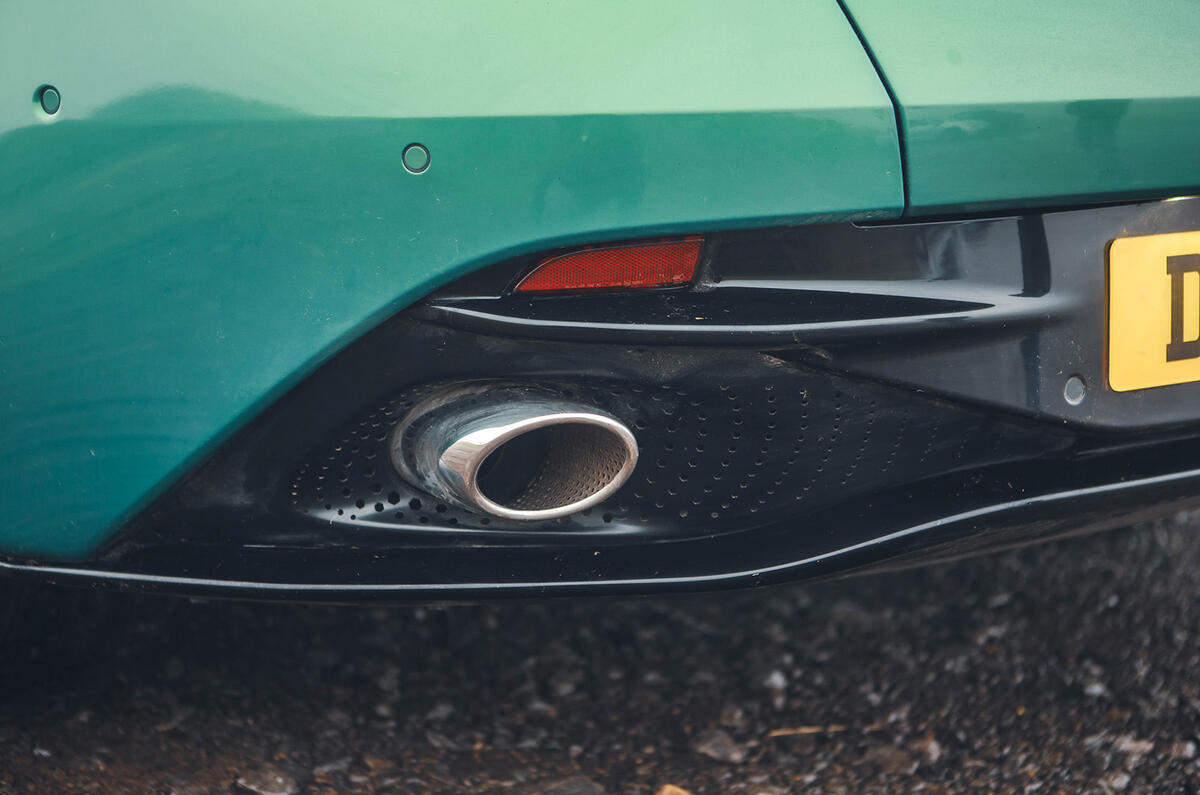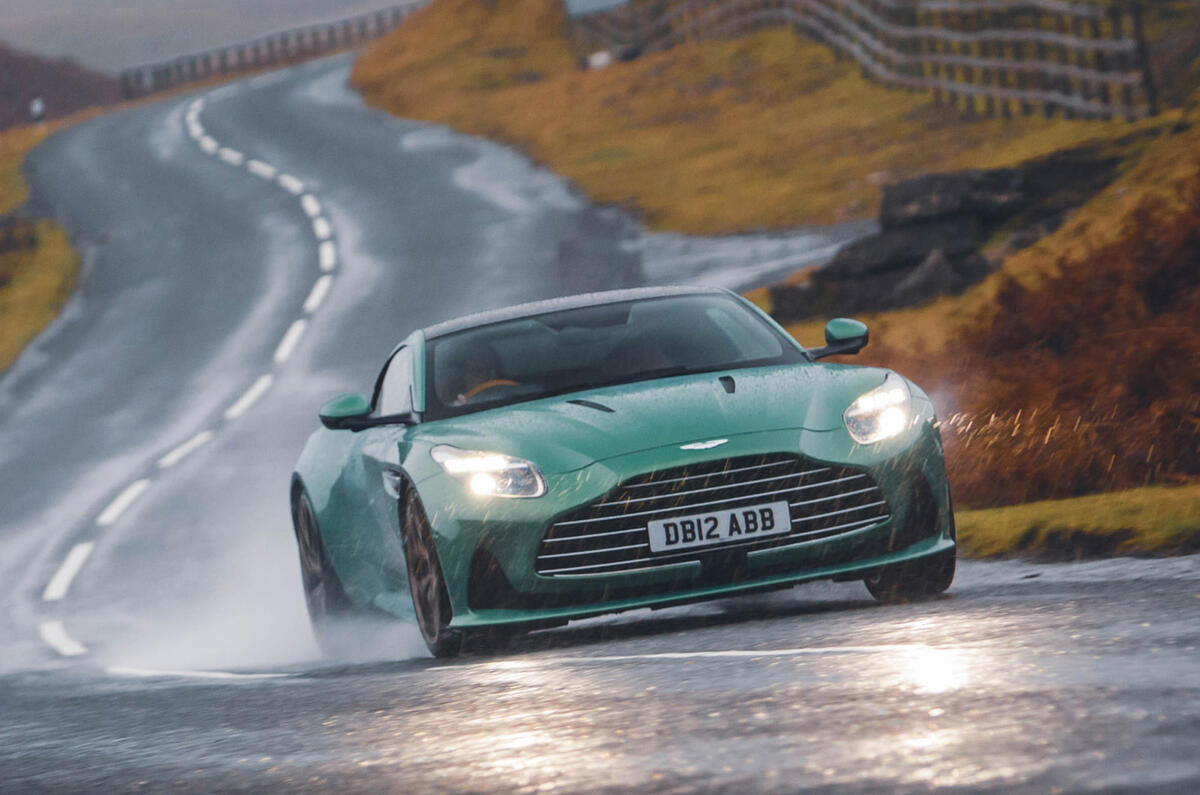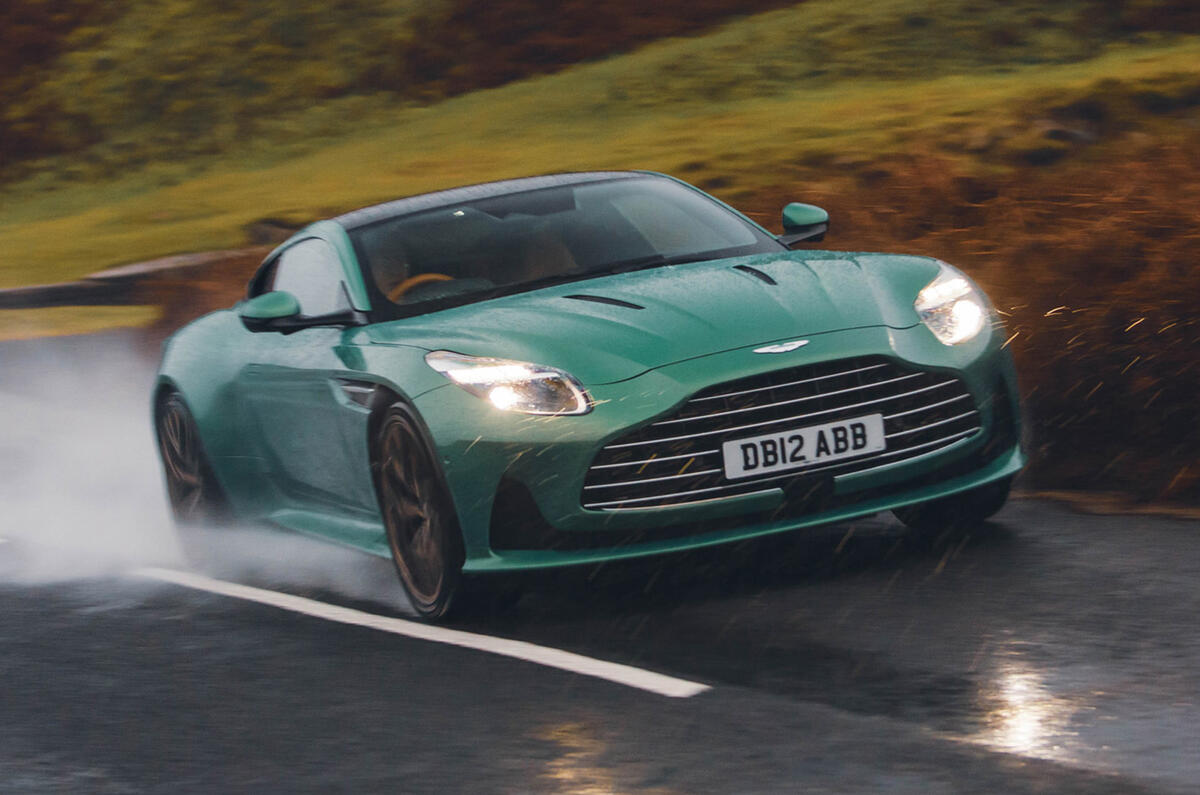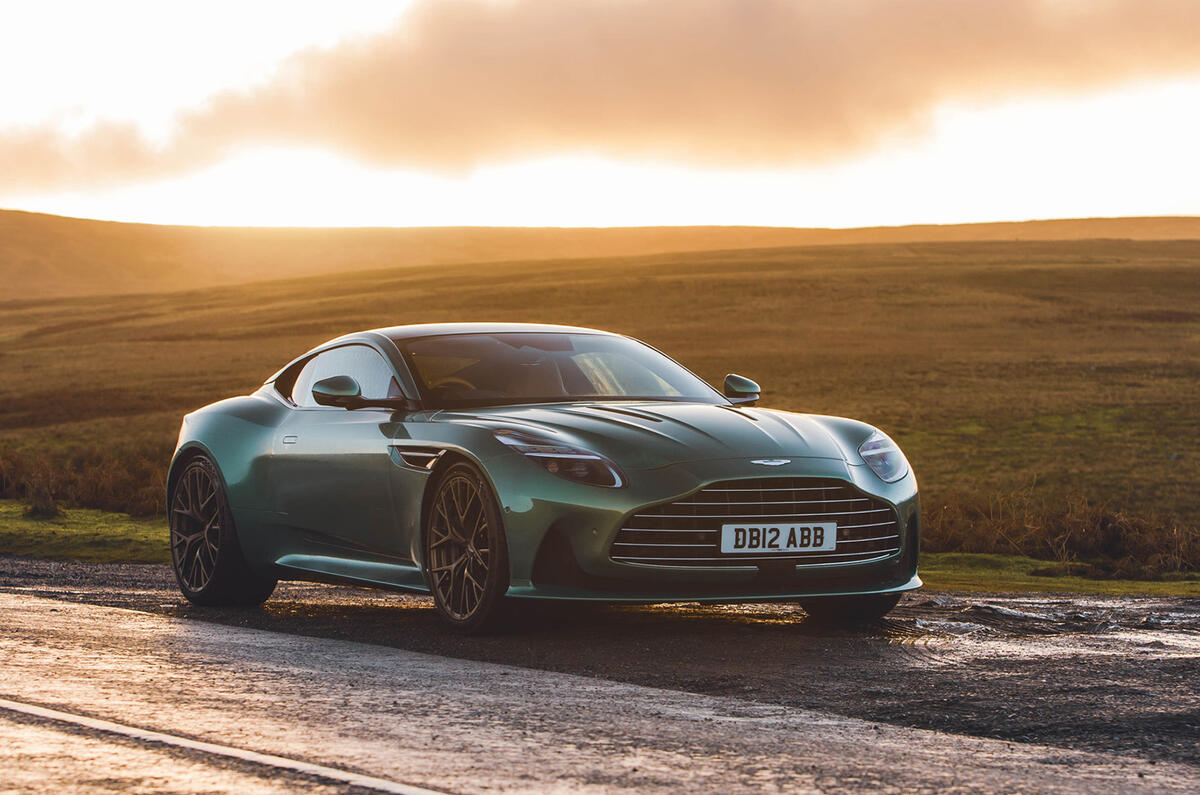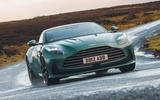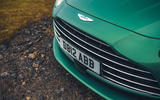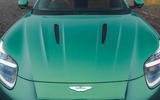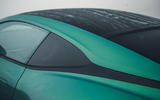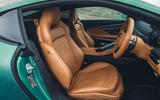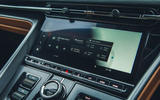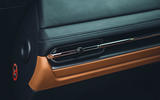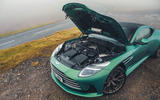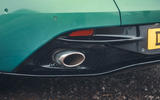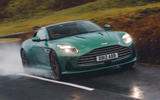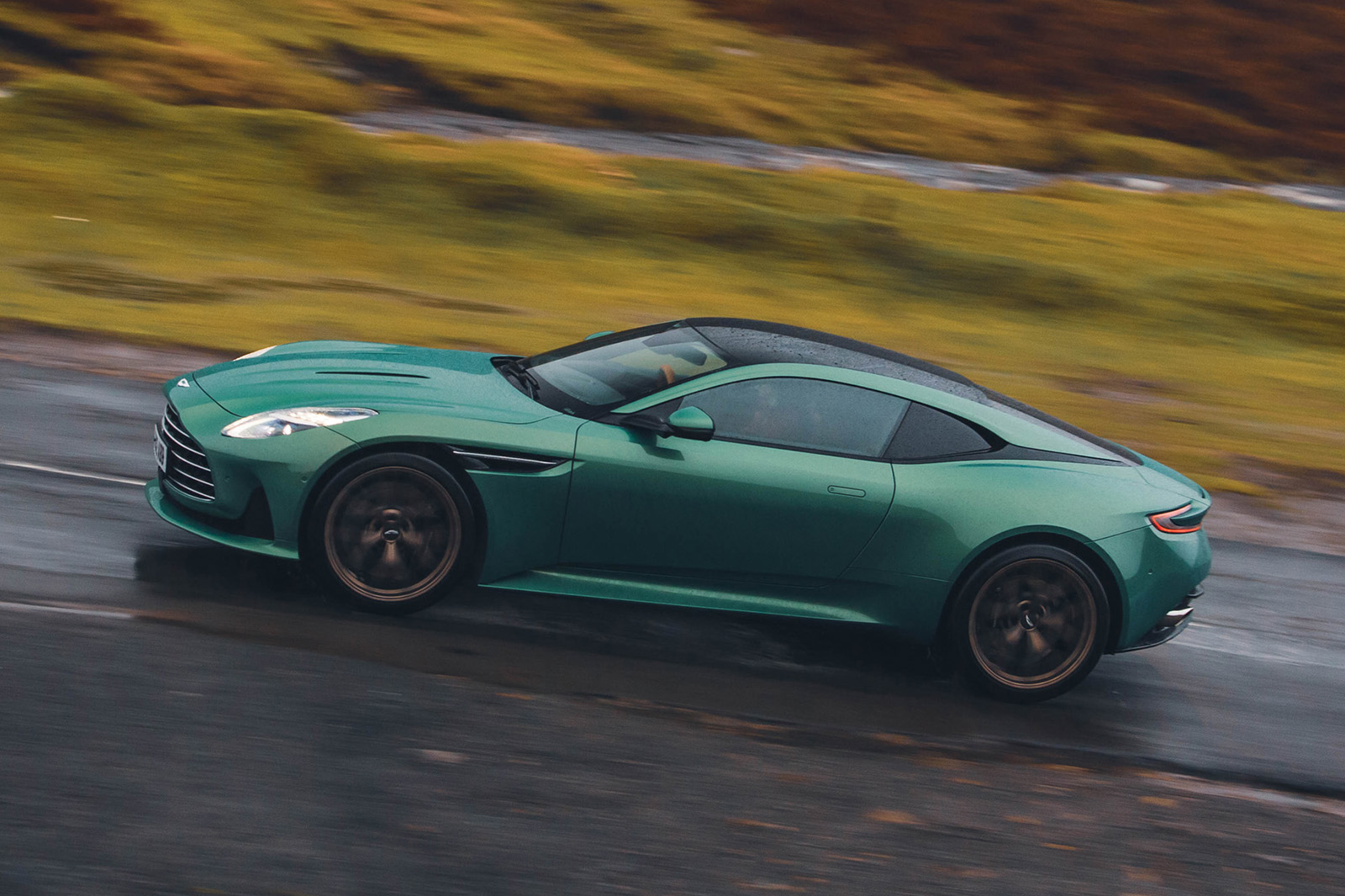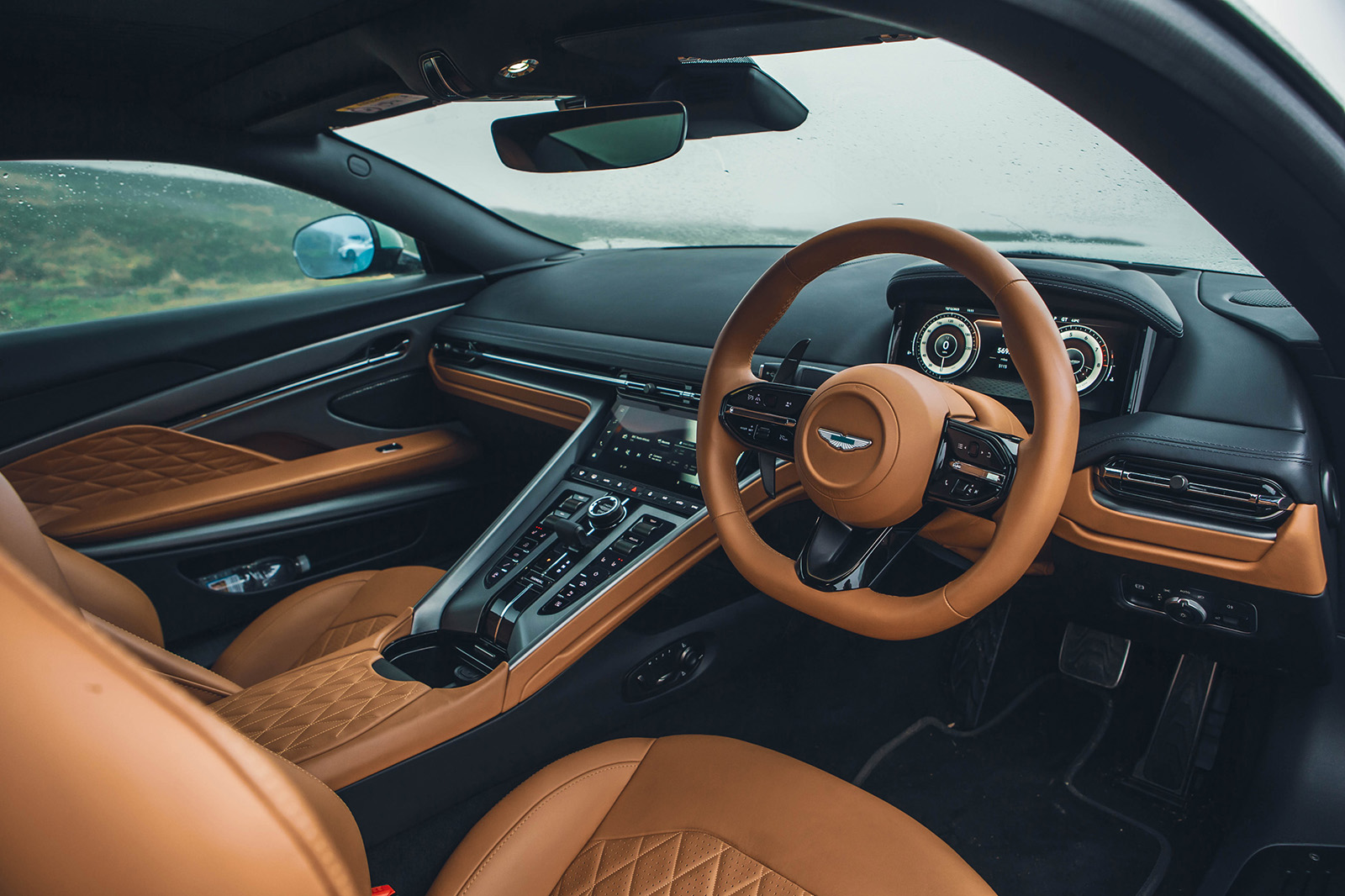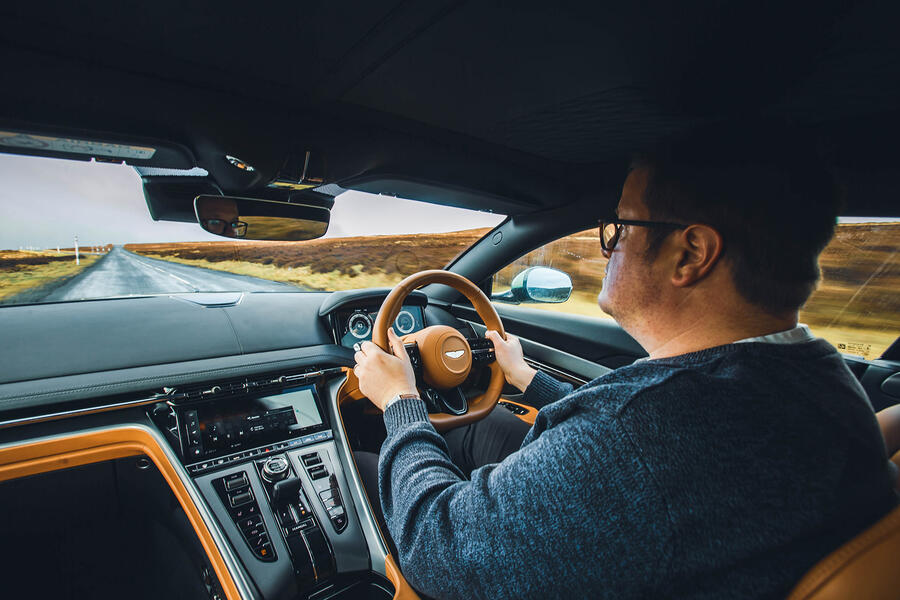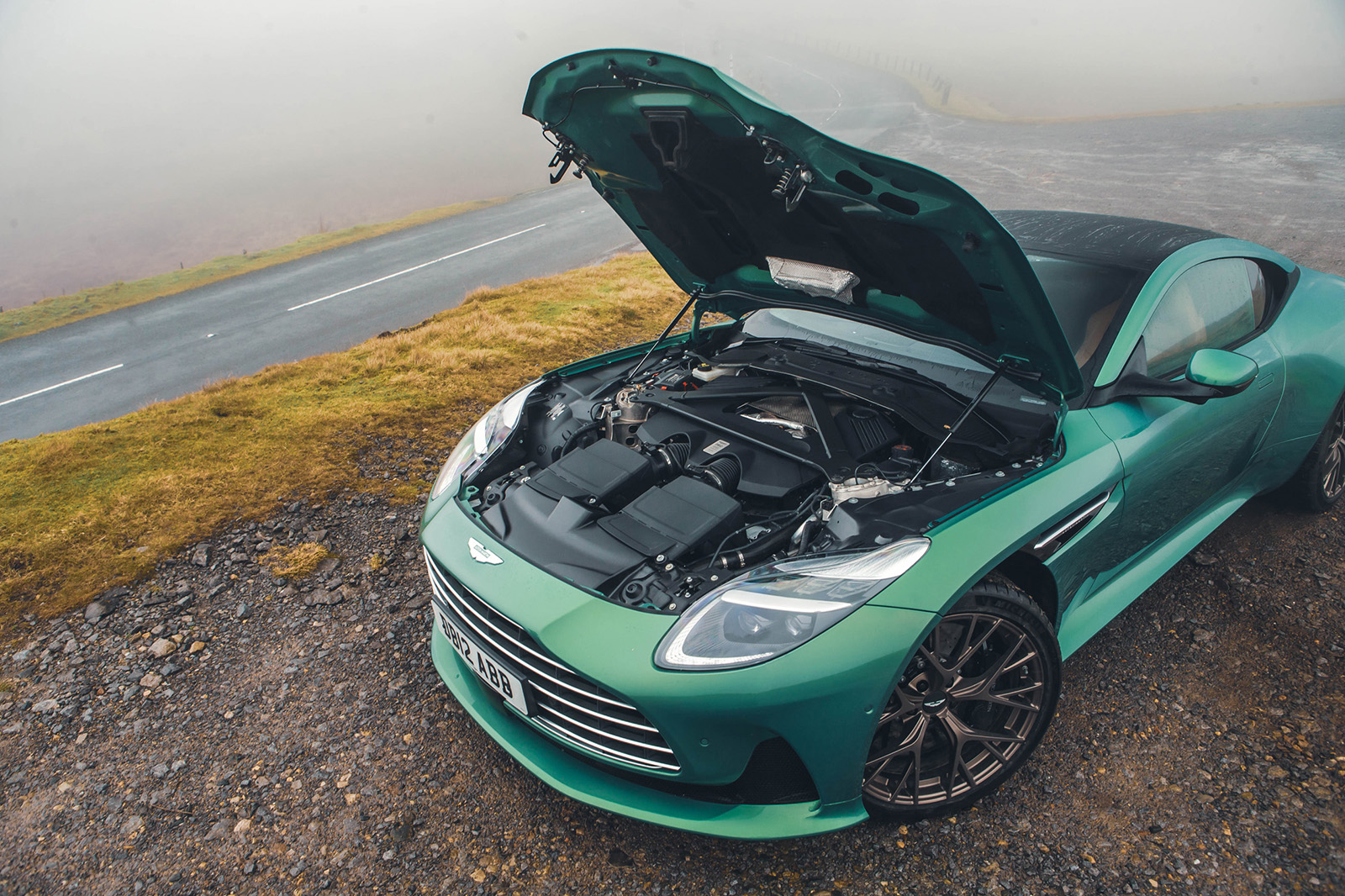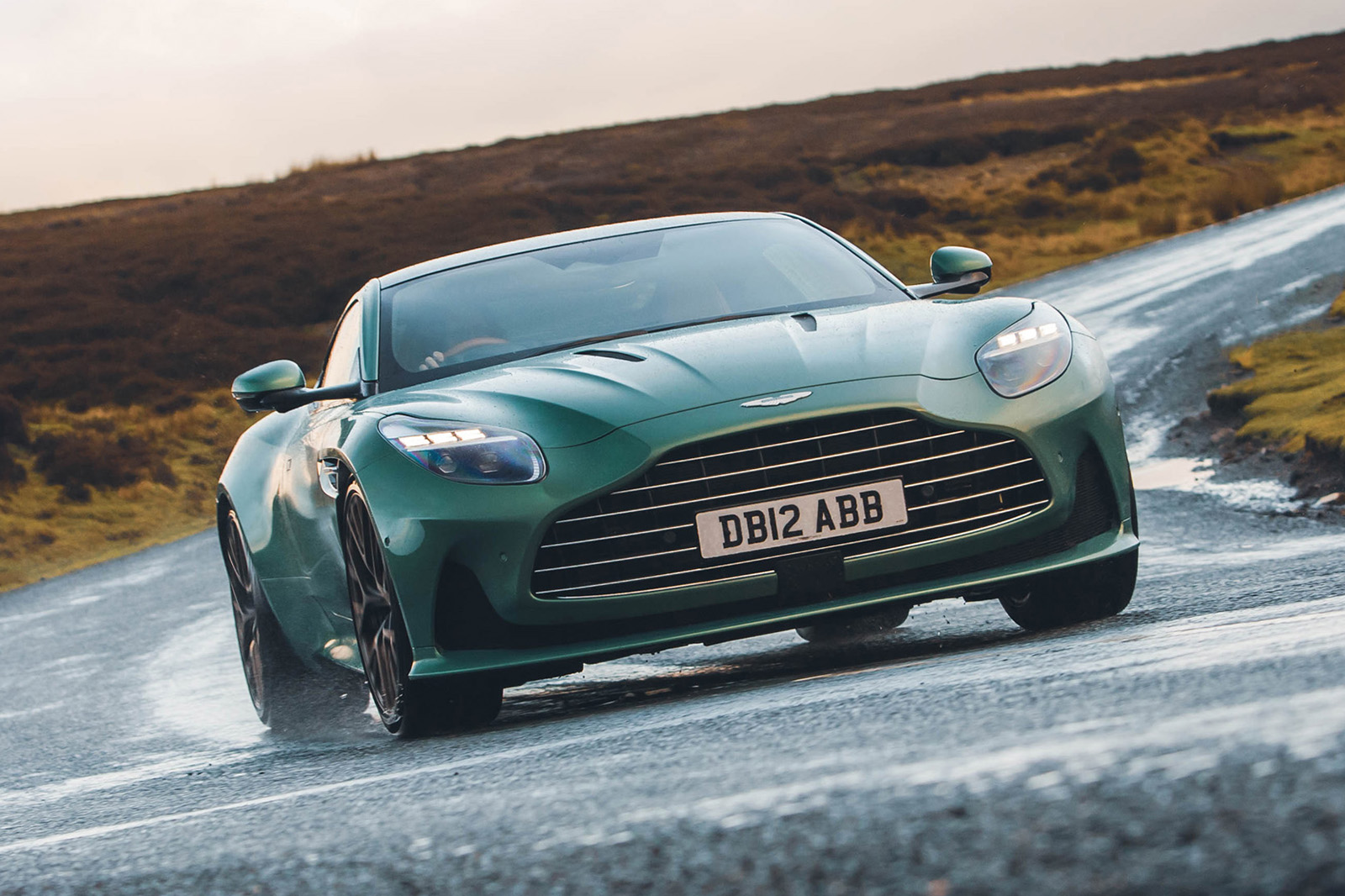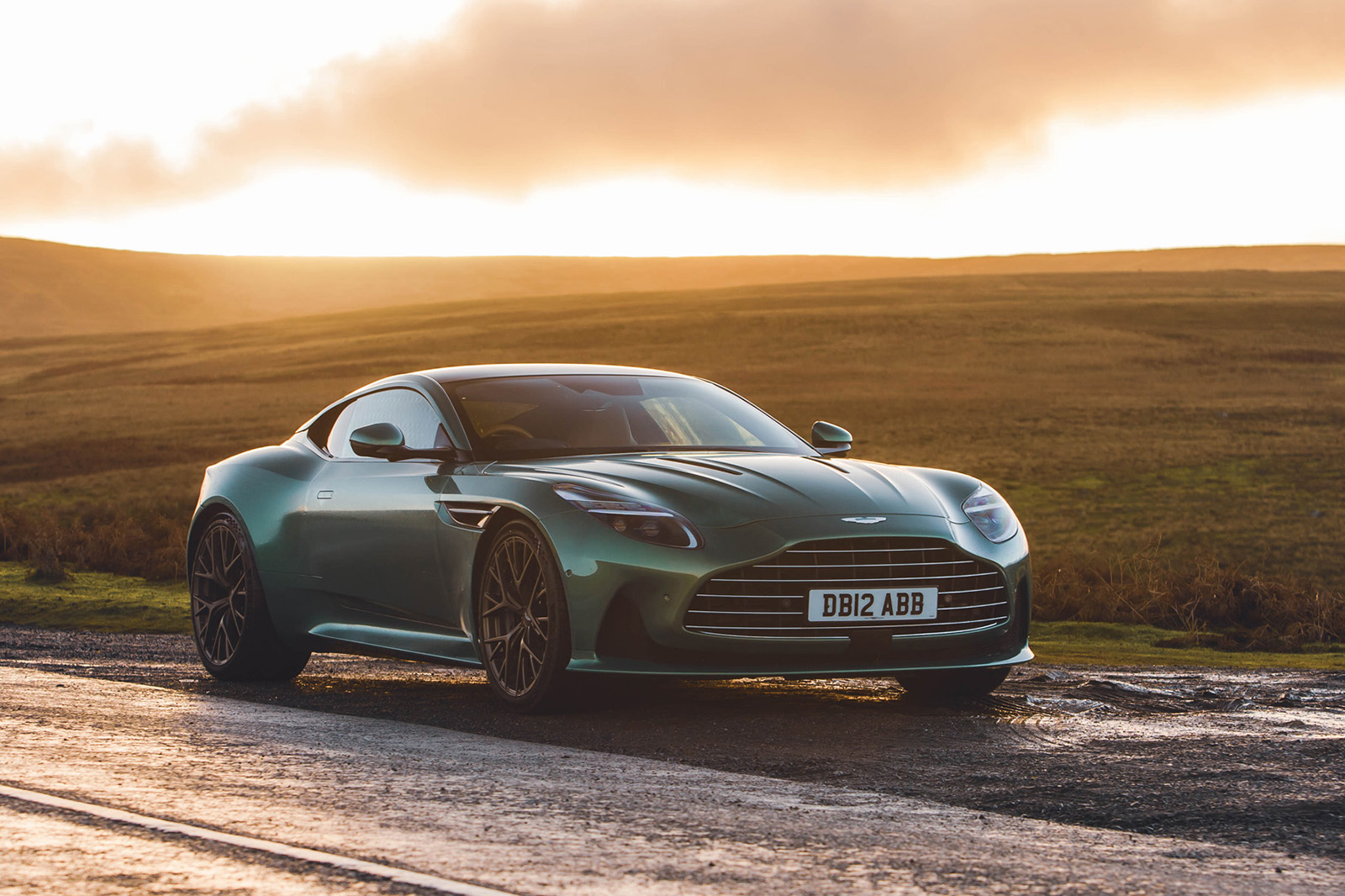On the road, the DB12’s V8 doesn’t want for much – certainly not outright power, nor mid-range response, nor effusive audible presence. Thanks not only to that headline power output but also a shortened final drive ratio, the car feels much quicker and keener than its predecessor ever did, but it's still more soulful and mellow than a visceral, frenetic Ferrari V8 might be.
Gaydon has very cleverly conjured greater energy, rapidity and vigour for this car without making it higher-strung or any less effective as a long-striding GT. The gearbox shifts smoothly in GT mode, quicker in Sport and Sport+, holding lower gears for longer - but without overworking the active rear differential or making the car feel hyperactive. Even in slippery conditions, the DB12’s ground-covering composure is first rate.
Iron brakes comes as standard, carbon-ceramic ones are optional and, in the case of the Coupe, were fitted to our test car. They’re the kind that need quite a squeeze on the approach to a corner and again as you draw the car to a stop - although ultimately they create lots of stopping power and have decent feel at speed.
Then, when you floor the accelerator, you’re catapulted backwards. You need to recalibrate just how quickly everything comes at you in the DB12 versus the DB11, because it's faster and more capable everywhere. Your brain takes a while to realise that this is something altogether different.
We spent some time with Aston chairman Lawrence Stroll who, in a throwaway but deliberate remark, called the DB11 “slow”. The engineers clearly took that to heart, as the DB12 feels more DBS than DB11 in that respect.
Even so, the eight-speed automatic gearbox is nicely matched to the engine with a more GT – sorry, super tourer – positioning in mind. The gearshifts don’t want for any extra crispness or the savageness that a dual-clutch 'box would bring.
The engine sounds suitably epic, too; nicely savage but mellifluous with it, although not quite as wonderful as Aston’s old atmospheric V12 at revs. Opting for the Volante brings you that much closer to the action, of course, while also protecting you from buffetting, for the most part.
Weighing some 110kg more than the Coupe, the Volante is a slower-accelerating car on paper, but the truth is that, out on the open road, and with the roof down, it feels even faster. The sense of acceleration is magnified and there's something a disconnect between the car's louche, French Riviera aesthetic and its ability to send your stomach into free-fall.
Quite unusually, the Volante also has the same 202mph as the Coupe, and it will hit that speed roof up or down. Impressive.




